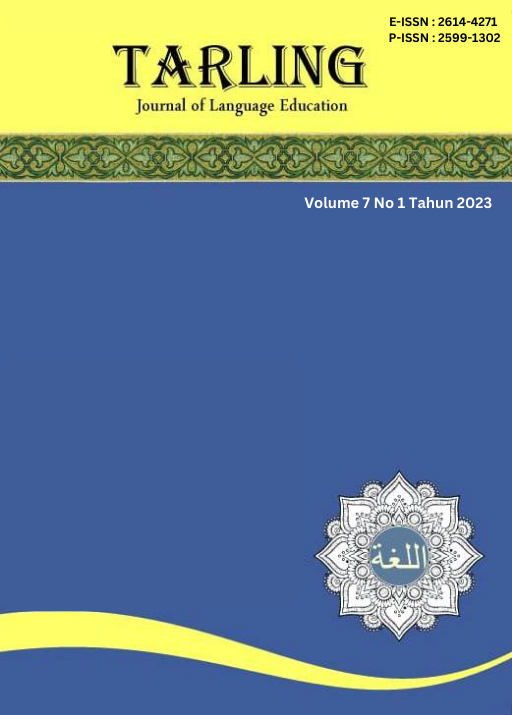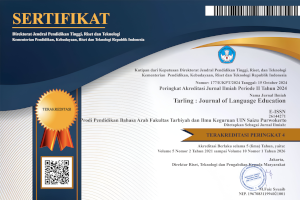Two Tenses for All Sixteen Tenses: A Constructivist Approach
DOI:
https://doi.org/10.24090/tarling.v7i1.9235Keywords:
constructivism, present tenses, past tenses, sentence structureAbstract
Getting to know and distinguishing the sixteen English tenses formula for some students, even college students, is not simple and straightforward. The construct of verb changes and modification in English is carefully considered one of the sources of the learning problem, and this concept – verb form changes - cannot be found in any Indonesian "dictionary". By means of conceiving the verb changes concept presented hierarchically (contractedly), comprehensively, simply, and fun, it is expected that the sixteen tenses formula can be facilely understood. This article aims at presenting descriptively (qualitatively) a learning design of sixteen English tenses with a constructivist approach. Those namely sixteen tenses formula are to be simplified through the classification of two tenses. Those two distinct tenses are namely present and past. All the English tenses are explained through the concept of the two tenses. The construct of present and past tenses is explained through understanding the minimum requirements for the formation of a sentence, namely the existence of a subject and predicate. Some of the previous research results are selected in order to elucidate the intended learning design.Downloads
Published
2023-06-30
Issue
Section
Articles
License
Copyright (c) 2023 Yohanes Heri Pranoto, Vewent Fest Levinli

This work is licensed under a Creative Commons Attribution-ShareAlike 4.0 International License.
Authors who publish with this journal agree to the following terms:
- Authors retain copyright and grant the journal right of first publication with the work simultaneously licensed under a Creative Commons Attribution License that allows others to share the work with an acknowledgement of the work's authorship and initial publication in this journal.
- Authors are able to enter into separate, additional contractual arrangements for the non-exclusive distribution of the journal's published version of the work (e.g., post it to an institutional repository or publish it in a book), with an acknowledgement of its initial publication in this journal.
- Authors are permitted and encouraged to post their work online (e.g., in institutional repositories or on their website) prior to and during the submission process, as it can lead to productive exchanges, as well as earlier and greater citation of published work (See The Effect of Open Access).










